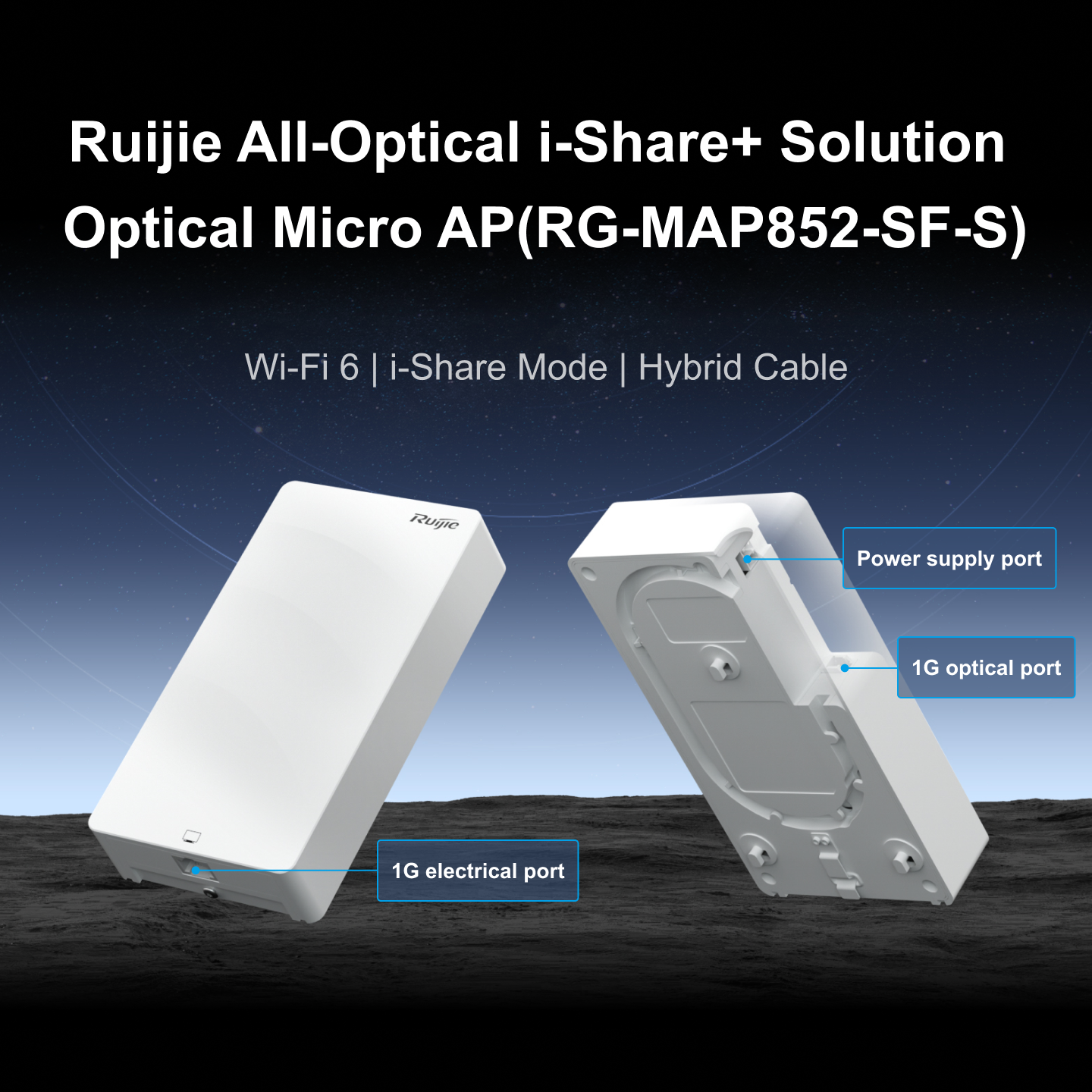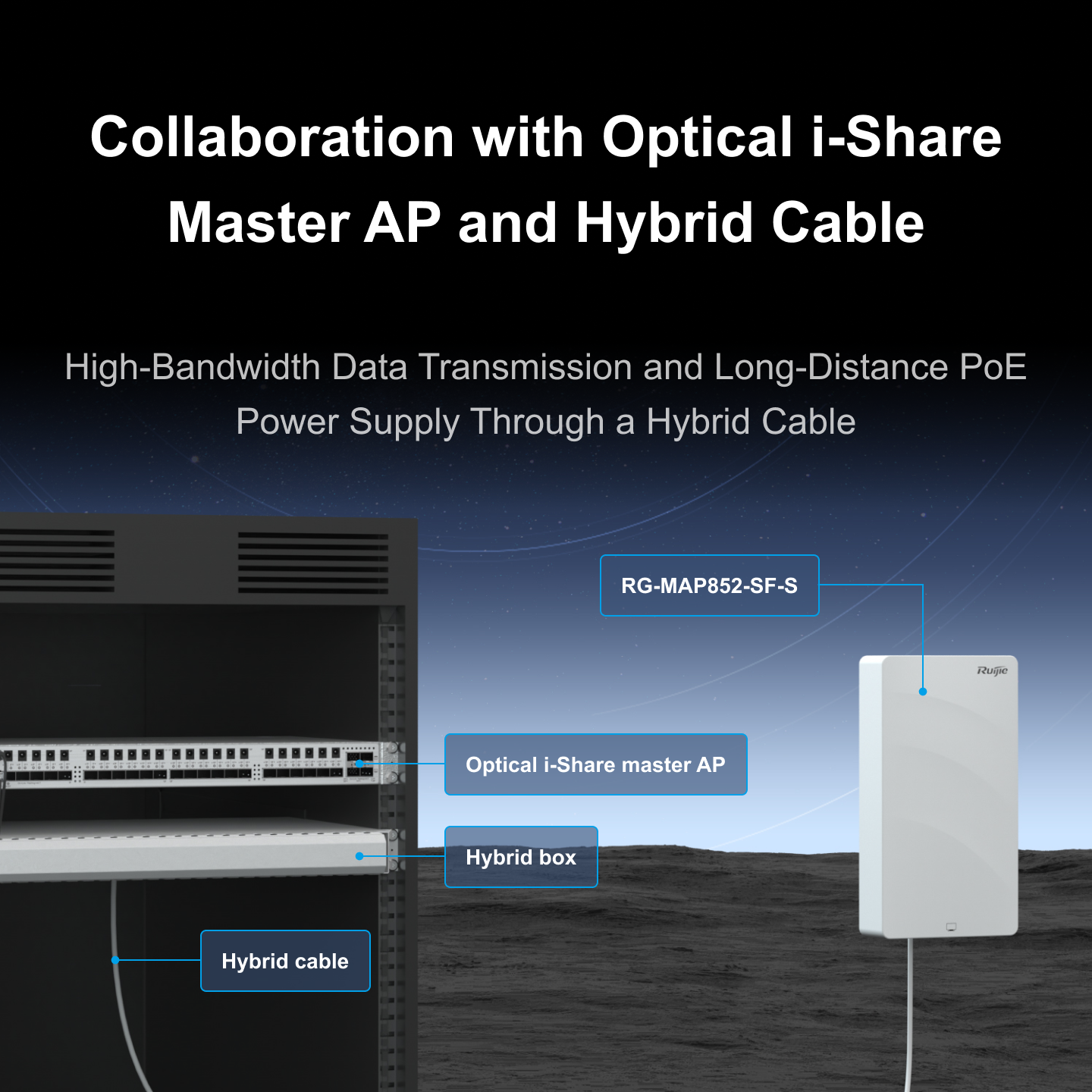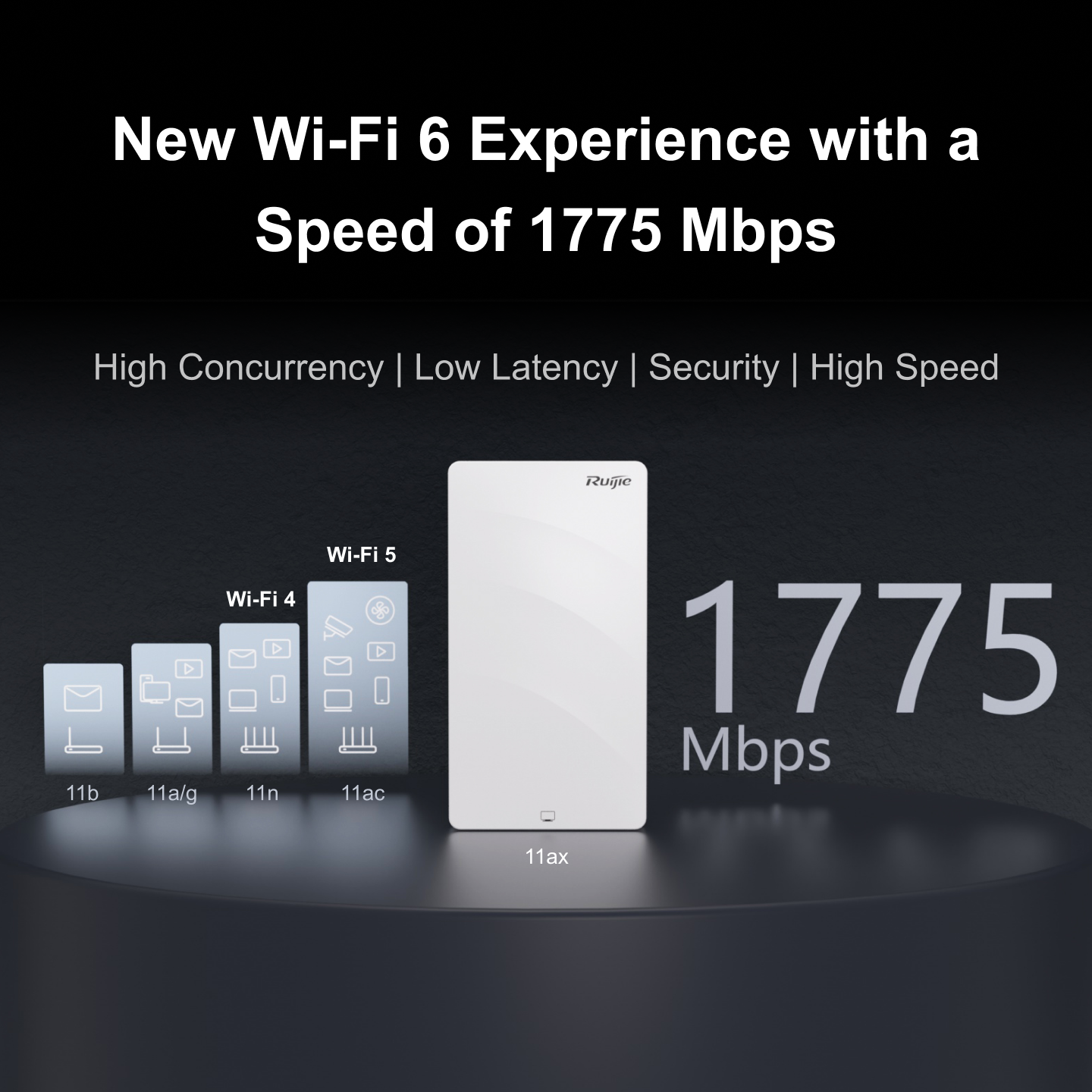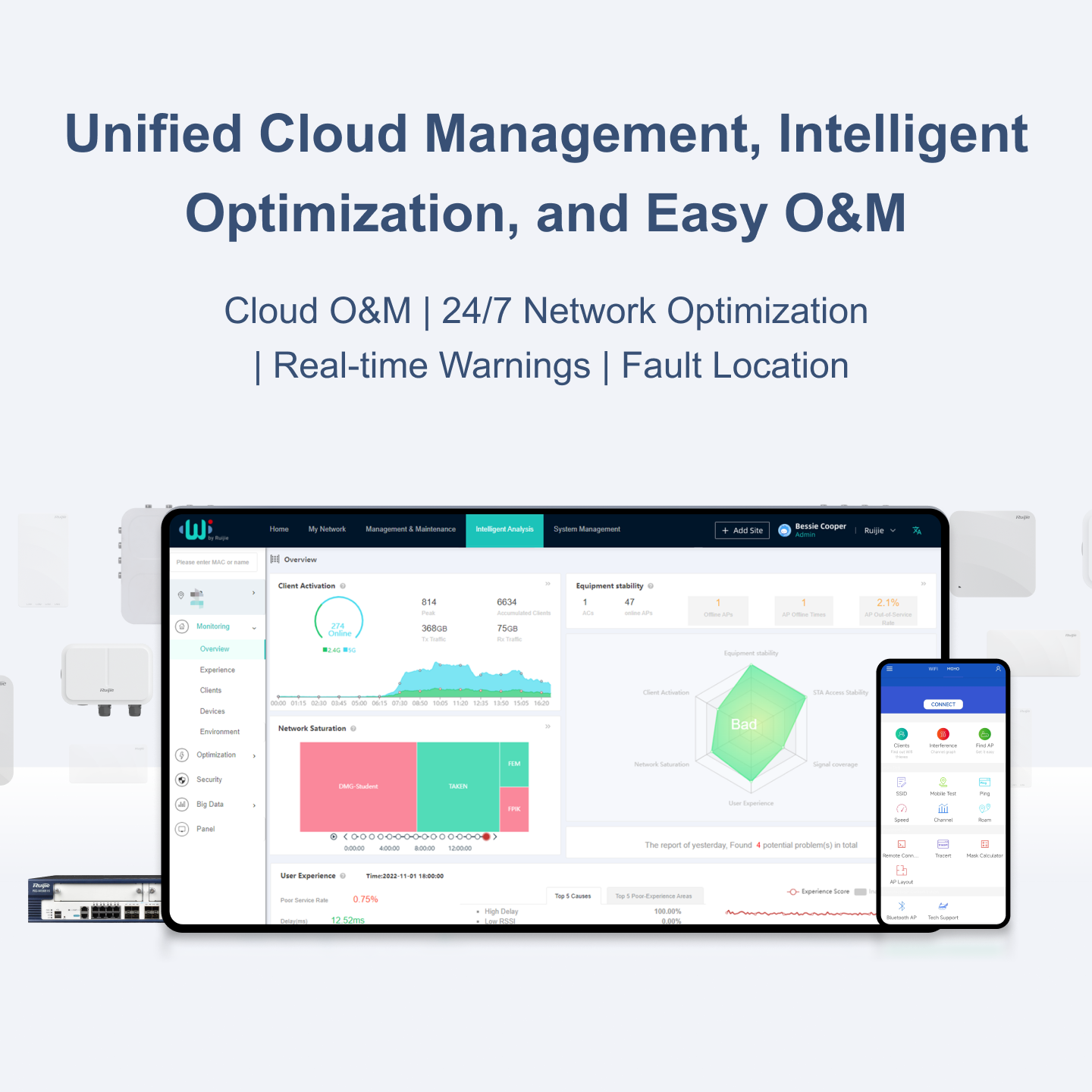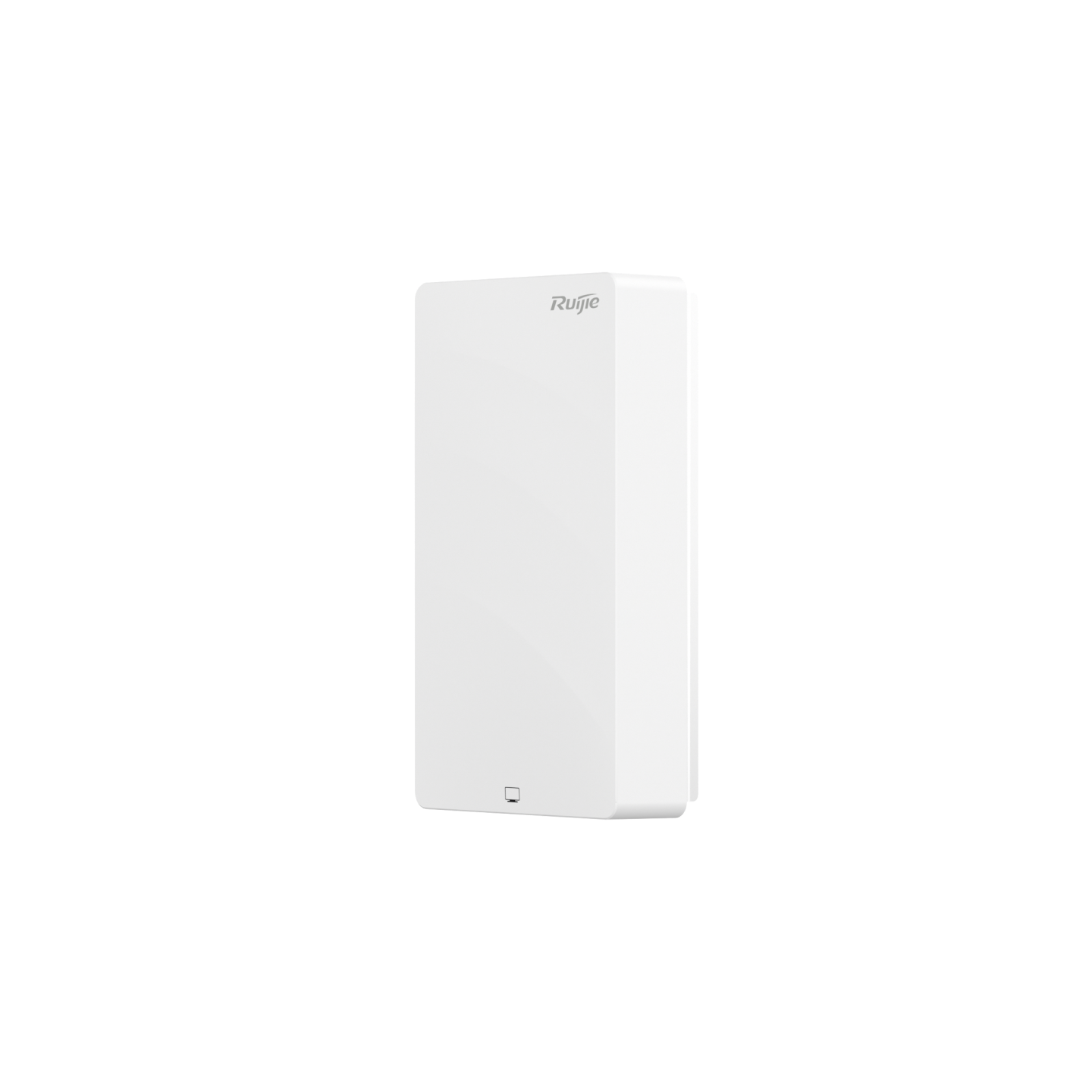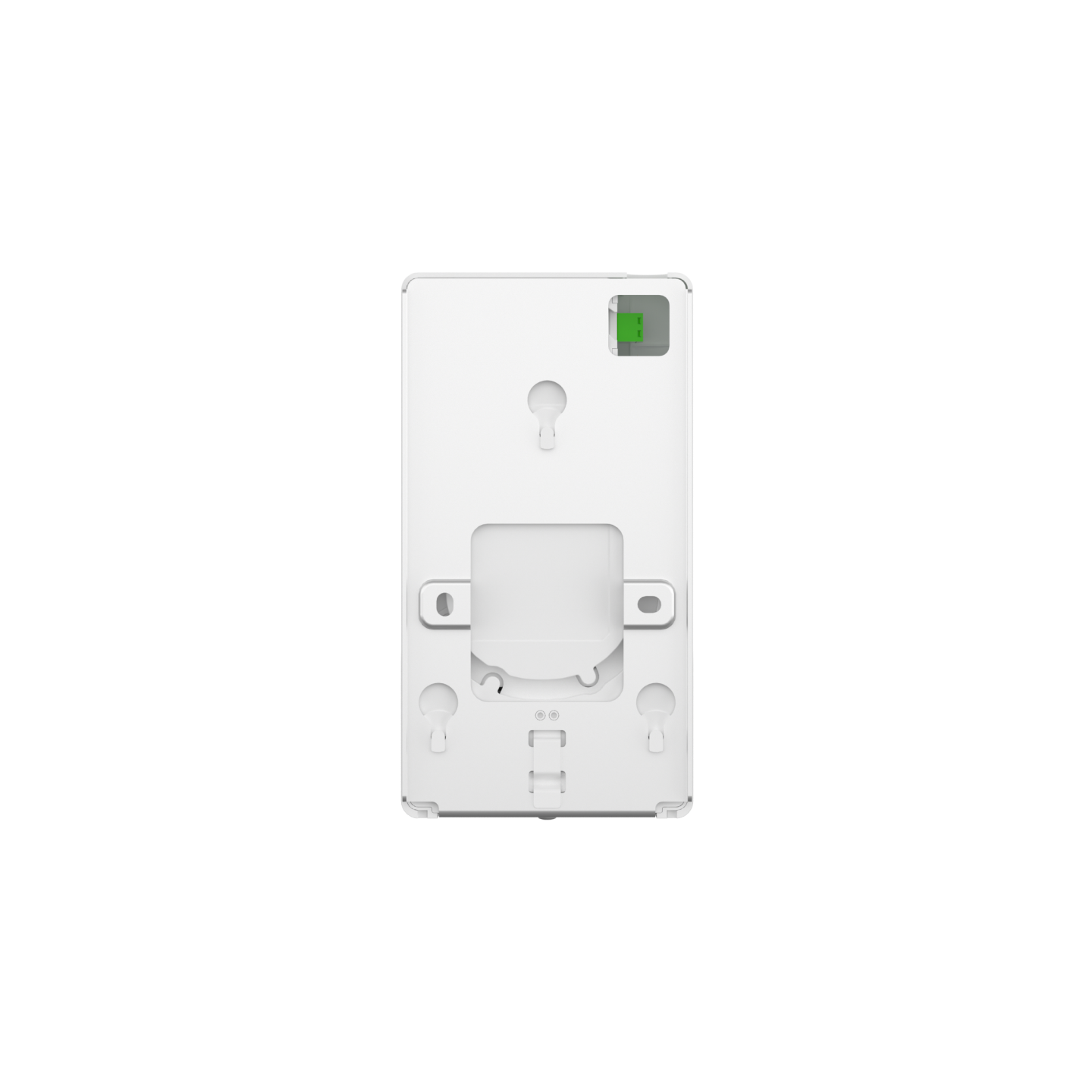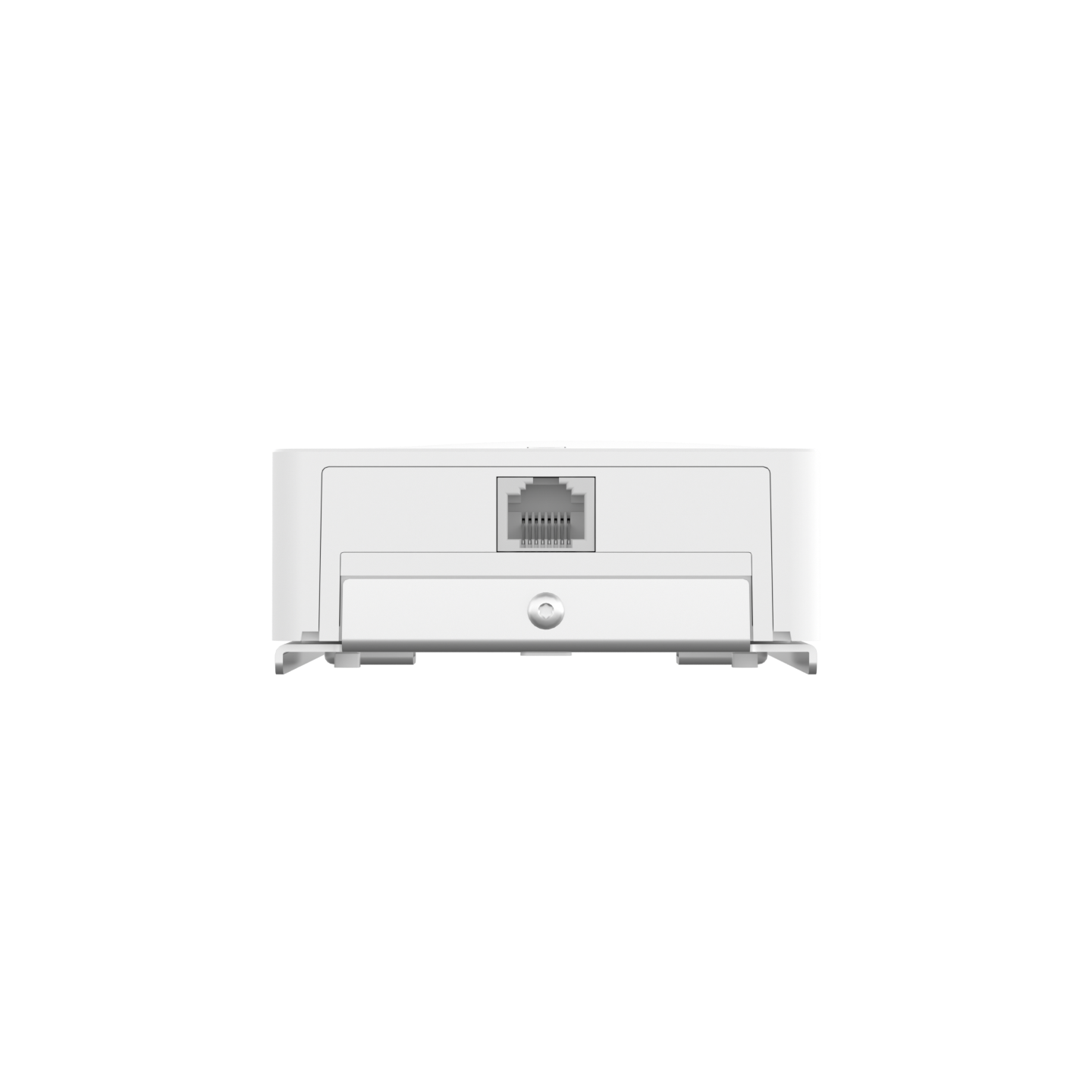| Radio design |
Dual-radio: Up to a total of four spatial streams Radio 1: 2.4 GHz, 2 spatial streams: 2x2, MU-MIMO Radio 2: 5 GHz, 2 spatial streams: 2x2, MU-MIMO |
| Operating frequencies |
Radio 1, 802.11b/g/n/ax: ● 2.400 GHz to 2.4835 GHz, channels 1 to 13 Radio 2, 802.11a/n/ac/ax: ● 5.150 GHz to 5.250 GHz, U-NII-1, channels 36, 40, 44, and 48 ● 5.250 GHz to 5.350 GHz, U-NII-2A, channels 52, 56, 60, and 64 ● 5.470 GHz to 5.725 GHz, U-NII-2C, channels 100, 104, 108, 112, 116, 120, 124, 128, 132, 136, and 140 ● 5.725 GHz to 5.850 GHz, U-NII-3/ISM, channels 149, 153, 157, 161, and 165 Note: Country-specific restrictions apply. |
| Date rates |
Combined peak data rate: 1.775 Gbps Radio 1: 2.4 GHz, 574 Mbps ● Two spatial stream Single User (SU) MIMO for up to 574 Mbps wireless data rate to individual 2SS HE40 802.11ax client devices (max.) ● Two spatial stream Single User (SU) MIMO for up to 287 Mbps wireless data rate to individual 2SS HE20 802.11ax client devices (typical) Radio 2: 5 GHz, 1.201 Gbps ● Two spatial stream Single User (SU) MIMO for up to 1.201 Gbps wireless data rate to individual 2SS HE80 802.11ax client devices (typical) ● Two spatial stream Multi-User (MU) MIMO for up to 1.201 Gbps wireless data rate to two 1SS or 2SS HE80 802.11ax DL-MU-MIMO client devices (max.) |
| Data rate set |
The following 802.11-compliant data rates in Mbps are supported: 2.4 GHz radio ● 802.11b: 1, 2, 5.5, 11 ● 802.11g: 1, 2, 5.5, 6, 9, 11, 12, 18, 24, 36, 48, 54 ● 802.11n: 6.5 to 300 (MCS0 to MCS15, HT20 to HT40) ● 802.11ax: 8.6 to 574 (MCS0 to MCS11, NSS = 1 to 2, HE20 to HE40) 5 GHz radio ● 802.11a: 6, 9, 12, 18, 24, 36, 48, 54 ● 802.11n: 6.5 to 600 (MCS0 to MCS15, HT20 to HT40) ● 802.11ac: 6.5 to 867 (MCS0 to MCS9, NSS = 1 to 2, VHT20 to VHT80) ● 802.11ax: 8.6 to 1,201 (MCS0 to MCS11, NSS = 1 to 2, HE20 to HE80) |
| Packet aggregation |
802.11n/ac/ax: A-MPDU and A-MSDU |
| Antenna type |
Built-in omnidirectional antenna ● 2 x 2.4 GHz antennas ● 2 x 5 GHz antennas |
| Max. antenna gain |
4.72 dBi in 2.4 GHz and 6.12 dBi in 5 GHz With reference to the pattern of each antenna of the MIMO radios, the maximum gain of the effective per-antenna pattern is 3 dBi in 2.4 GHz and 3 dBi in 5 GHz. |
| Max. transmit power |
2.4 GHz radio: 21 dBm (18 dBm per chain) 5 GHz radio: 21 dBm (18 dBm per chain) Note: The transmit power is limited by local regulatory requirements. |
| Power increment |
Configurable in increments of 1 dBm or in percentage (recommended) |
| Radio technologies |
802.11b: Direct-Sequence Spread-Spectrum (DSSS) 802.11a/g/n/ac: Orthogonal Frequency-Division Multiplexing (OFDM) 802.11ax: Orthogonal Frequency Division Multiple Access (OFDMA) |
| Modulation types |
802.11b: BPSK, QPSK, CCK 802.11a/g/n: BPSK, QPSK, 16-QAM, and 64-QAM 802.11ac: BPSK, QPSK, 16-QAM, 64-QAM, and 256-QAM 802.11ax: BPSK, QPSK, 16-QAM, 64-QAM, 256-QAM, 1024-QAM |

